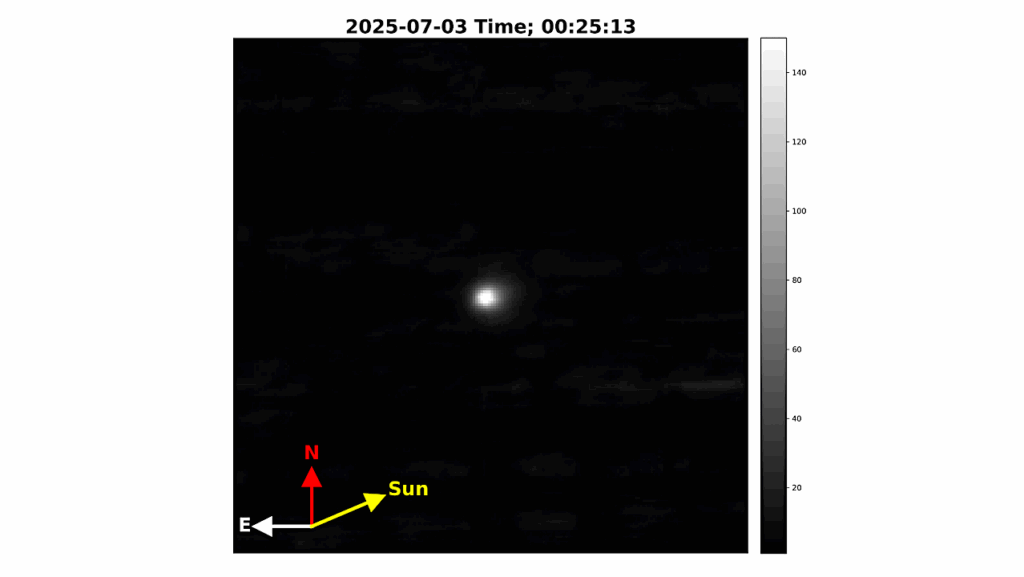Astronomers come up dry in search for water on exoplanets

A team of astronomers has made the most precise measurements yet of water vapour in the atmospheres of Jupiter-like planets beyond our Solar System and found them to be much drier worlds than expected.
The team, including Dr. Nicolas Crouzet of the Dunlap Institute for Astronomy & Astrophysics, University of Toronto, has found that the abundance of atmospheric water vapour is between ten and a thousand times less than what models predict.
“The low water vapour levels are surprising,” says Crouzet. “Our models predict a much higher abundance of water vapour, and so these results challenge our current understanding of planet formation. And they raise questions about our ability to identify water in an Earth-like exoplanet.”
According to the core accretion theory of planet formation, planetary systems form from a huge disk of hydrogen gas and dust around a star. Over a period of a million years or more, the dust particles stick together, forming larger and larger grains. Eventually, the grains collect to form planetesimals which eventually coalesce into a planet. At the same time, the gravity of the planet attracts an atmosphere of gas from the disk.
The theory predicts that a planet’s most abundant element will be oxygen, which would take the form of water vapour in the atmosphere. The very low levels of water vapour discovered by the researchers raise questions about our understanding of the chemical processes involved in planet formation.
The results also give astronomers an idea of what they face in searching for an exoplanet capable of supporting life.
“These very hot planets with large atmospheres, orbiting nearby stars, are the best possible candidates for measuring water levels,” says Dr. Nikku Madhusudhan of the Institute of Astronomy at the University of Cambridge. “And yet the levels we found were much lower than expected. This shows just how challenging it could be to detect water on Earth-like exoplanets in our search for potential life elsewhere.”
Madhusudhan is lead author on the paper describing these results, published 24 July 2014 in the Astrophysical Journal Letters. In addition to Madhusudhan and Crouzet, collaborators included Dr. Drake Deming from the University of Maryland, and Dr. Peter McCullough from the Space Telescope Science Institute and Johns Hopkins University.
The team analyzed near-infrared spectra, obtained using the Hubble Space Telescope, of three exoplanets between 60 and 900 light years away, identified as HD 189733b, HD 209458b, and WASP-12b. The exoplanets belong to a class of planets known as “hot Jupiters” and have average temperatures between 900 and 2200* C.
The Hubble Space Telescope did not directly resolve the planets; instead, it collected light from both the parent star as well as light that passed through the planet’s atmosphere as the planet passed in front of the star. “Subtracting” the light of the star from the total light collected left the light that passed through the planet’s atmosphere. Spectroscopic analysis of this light allowed the astronomers to measure the presence of water vapour.








